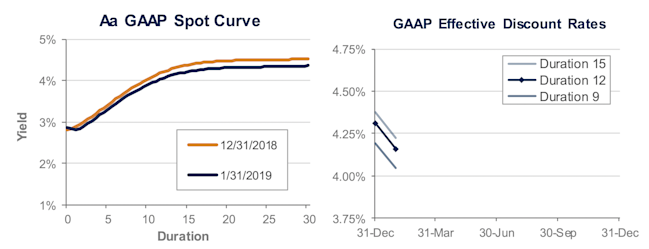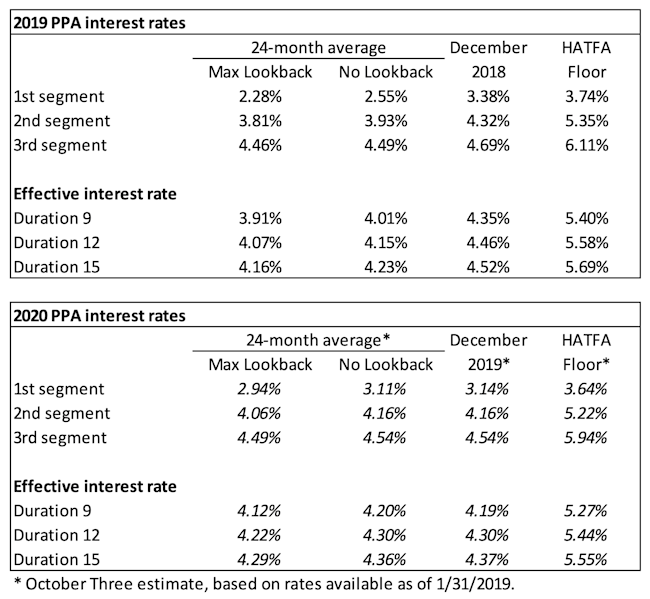January 2019 Pension Finance Update
Stock markets rallied in January, recouping a chunk of losses seen in the fourth quarter of 2018 and producing gains for pension finance last month. Both model plans we track[1] improved in January: Plan A gained almost 3%, while Plan B gained about 1%.
Stock markets rallied in January, recouping a chunk of losses seen in the fourth quarter of 2018 and producing gains for pension finance last month. Both model plans we track[1] improved in January: Plan A gained almost 3%, while Plan B gained about 1%:

Assets
January was a very good month for stocks. The table below summarizes returns on various stock indices included in our model portfolio:

Bonds gained ground last month as well, driven by lower interest rates. Treasury bonds earned a fraction of 1% in January, while corporate bonds earned 1%-3% as credit spreads narrowed by more than 0.1%. A diversified bond portfolio earned 1%-2% in January, with long credit enjoying the biggest gains.
Overall, our traditional 60/40 gained 5%-6% in January, while the conservative 20/80 portfolio grew about 3%.
Liabilities
Pension liabilities (for funding, accounting, and de-risking purposes) are driven by market interest rates. The graph on the left compares our Aa GAAP spot yield curve at December 31, 2018, and January 31, 2019. The graph on the right shows our estimate of movements in effective GAAP discount rates for pension obligations of various duration during 2019:

Corporate bond yields fell 0.15% in January, pushing pension liabilities up 2%-3%.
Summary
After falling 15% in the fourth quarter, stock markets clawed back more than half of those losses in January, giving pensions a boost to start 2019:

Looking Ahead
Pension funding relief has reduced required plan funding since 2012, but relief is expected to gradually sunset over the next 3-4 years, increasing funding requirements for pension sponsors that have only made required contributions.
Discount rates moved down last month. We expect most pension sponsors will use effective discount rates in the 3.9%-4.3% range to measure pension liabilities right now.
The table below summarizes rates that plan sponsors are required to use for IRS funding purposes for 2019, along with estimates for 2020. Pre-relief, both 24-month averages and December ‘spot’ rates, which are still required for some calculations, such as PBGC premiums, are also included.

[1] Plan A is a traditional plan (duration 12 at 5.5%) with a 60/40 asset allocation, while Plan B is a largely retired plan (duration 9 at 5.5%) with a 20/80 allocation with a greater emphasis on corporate and long-duration bonds. We assume overhead expenses of 1% of plan assets per year, and we assume the plans are 100% funded at the beginning of the year and ignore benefit accruals, contributions, and benefit payments in order to isolate the financial performance of plan assets versus liabilities.
